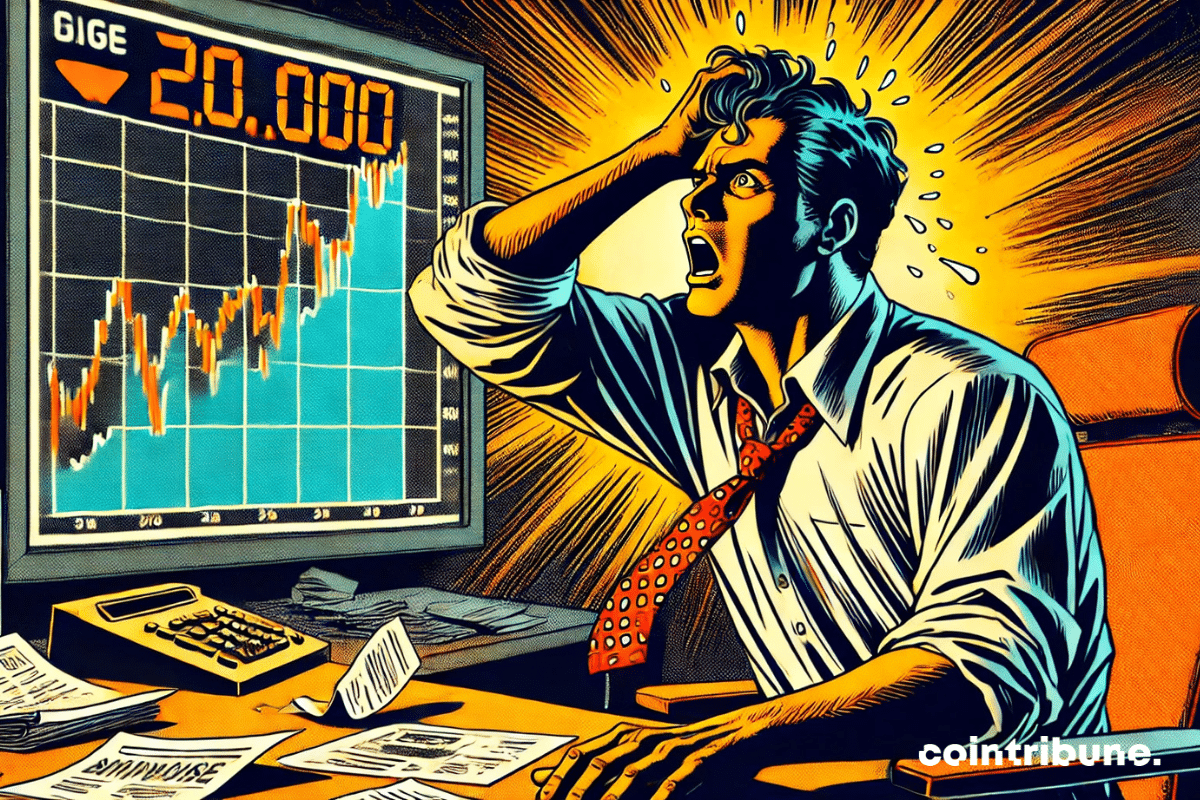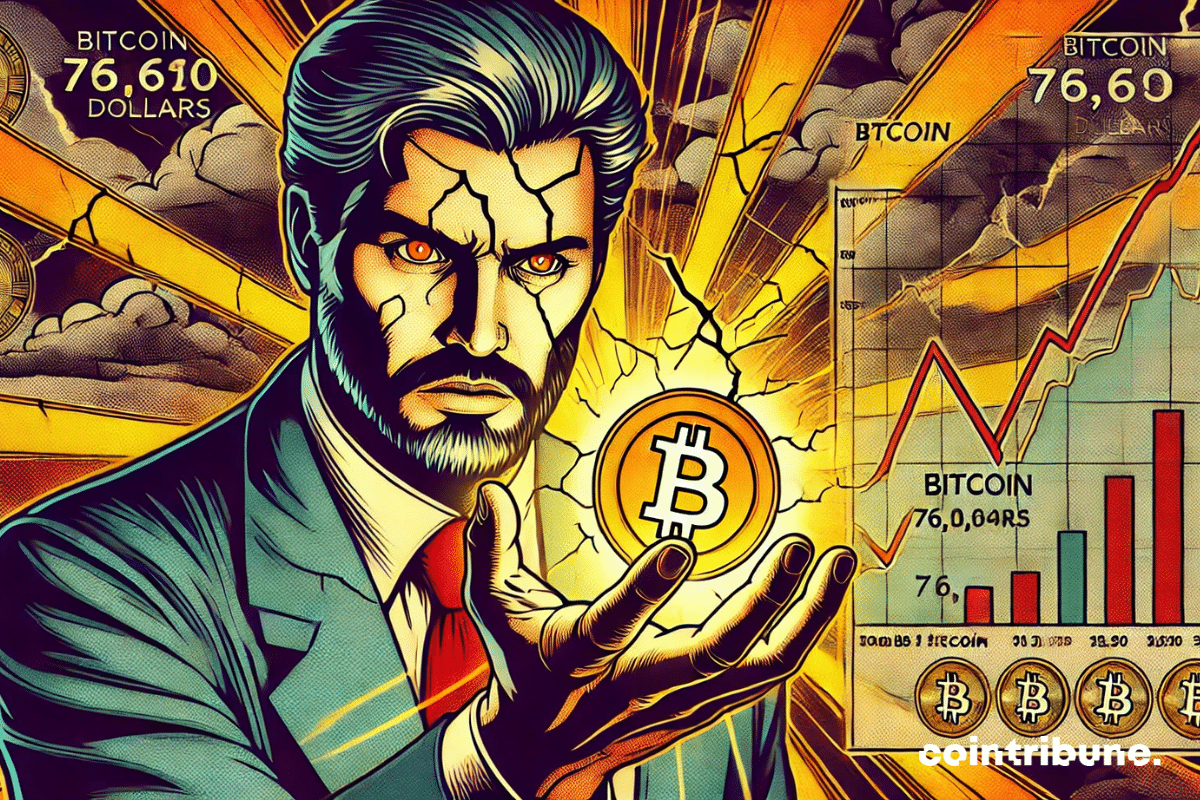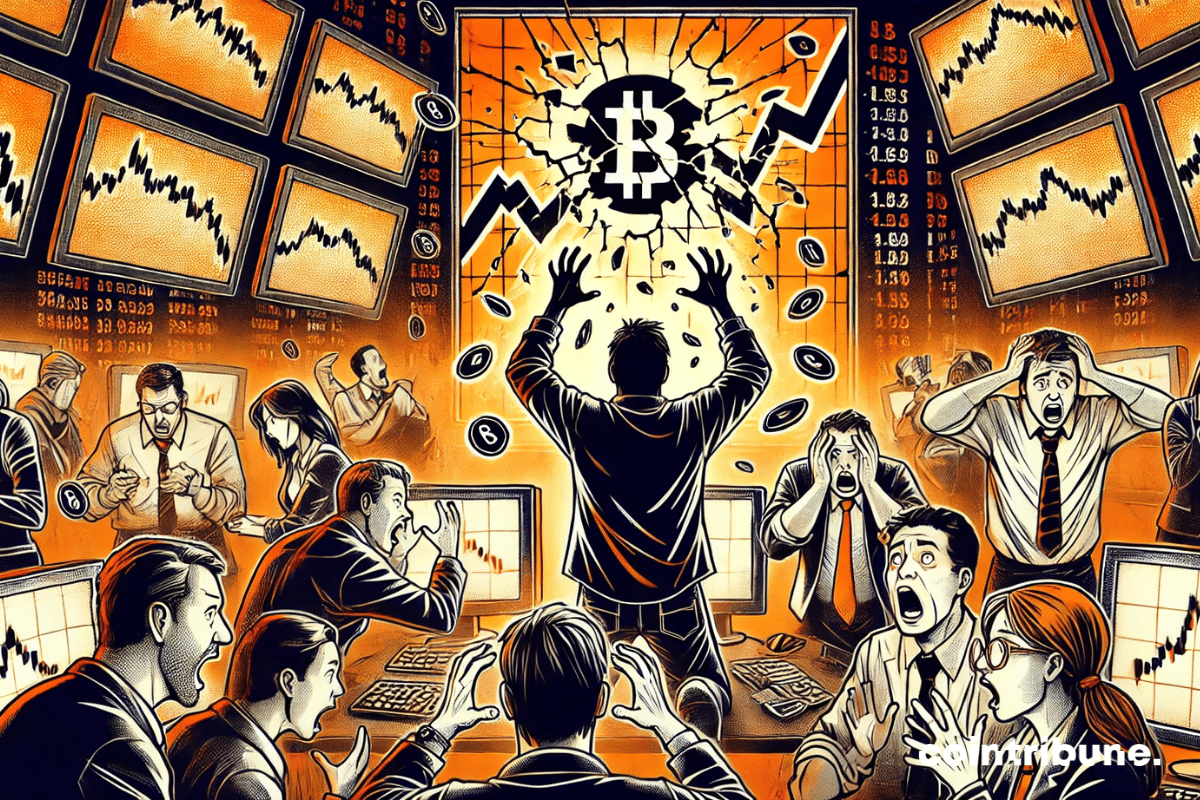The crypto market, characterized by sustained volatility, continues to surprise with the failure of predictions. While massive sell-offs have dominated trading in recent days, a report published by CoinShares highlights a singular phenomenon: institutional investors have significantly increased their positions in crypto products. Indeed, with net inflows reaching $308 million in a week, these investments sharply contrast with the general downward trend. This institutional support, although counterintuitive in an environment of strong economic pressure, reflects a strategic confidence in the potential of cryptos. Concurrently, the data reveals marked divergences among products, reflecting a reconfiguration of investment priorities. This dynamic paves the way for an in-depth analysis of the motivations of institutions and their implications for the future of crypto markets.
Home » Archives for Luc Jose Adjinacou » Page 27
Luc Jose A.
Diplômé de Sciences Po Toulouse et titulaire d'une certification consultant blockchain délivrée par Alyra, j'ai rejoint l'aventure Cointribune en 2019. Convaincu du potentiel de la blockchain pour transformer de nombreux secteurs de l'économie, j'ai pris l'engagement de sensibiliser et d'informer le grand public sur cet écosystème en constante évolution. Mon objectif est de permettre à chacun de mieux comprendre la blockchain et de saisir les opportunités qu'elle offre. Je m'efforce chaque jour de fournir une analyse objective de l'actualité, de décrypter les tendances du marché, de relayer les dernières innovations technologiques et de mettre en perspective les enjeux économiques et sociétaux de cette révolution en marche.
The world of crypto could experience a historic change with Donald Trump's return to the White House. Indeed, the elected president, already known for his divisive stances, has placed crypto at the heart of his economic priorities. He aims to propel the United States to the status of a global leader in this rapidly expanding sector. Among his promises are the creation of a strategic reserve of bitcoins and the establishment of policies favorable to crypto businesses. These initiatives, which demonstrate a desire for a break from the previous administration, evoke a mix of hope and skepticism within the industry. While his supporters praise a bold vision for the future of crypto, observers remind us of the many obstacles that will arise in the realization of these projects, whether political, economic, or regulatory. Donald Trump's next term could thus mark a decisive turning point in the evolution of cryptocurrencies in the United States and on the international stage.
As the year comes to a close, the bitcoin market finds itself at a decisive stage. Investors were hoping for a period of stability to end 2024 on a positive note after a series of significant fluctuations. However, several major technical indicators are countering these expectations and pointing towards a possible significant correction. Among these signals, the formation of a bearish pattern on the weekly charts and the erosion of critical support levels are raising serious concerns. Concurrently, macroeconomic conditions, marked by a decline in global money supply and a tightening of policies by the U.S. Federal Reserve, are increasing pressure on risk assets. These combined elements are fueling the most pessimistic projections. Thus, some observers even suggest that the price of bitcoin could drop by $20,000. A thorough analysis of these dynamics reveals both the challenges and the opportunities of a market in search of new certainties.
International economic dynamics always attract marked interest, particularly when coalitions like the BRICS are perceived as a threat to the hegemony of the American dollar. However, the recent statements from Russia, India, and South Africa have clarified their position. Indeed, these countries assert that no plan aims to weaken the American currency. They firmly reject the accusations of "de-dollarization" and emphasize their willingness to maintain stable relations with the United States.
Since its launch, Solana has distinguished itself as one of the most innovative blockchains in the industry. With its execution speed and some of the lowest transaction fees, it has attracted a dynamic ecosystem of developers and users. However, December 2024 marked a critical period. The Total Value Locked (TVL) in its DeFi ecosystem recorded a dramatic drop of $1.1 billion, reaching a critical level of $8.01 billion. This decline reflects weakened activity on the blockchain, as evidenced by a 7% decrease in the number of daily active addresses. At the same time, network revenues also fell by 24%, intensifying concerns about the sustainability and attractiveness of this leading platform. These numbers raise questions about Solana's ability to maintain its position in an increasingly competitive environment.
Amid revolutionary announcements, technological advancements, and regulatory turbulence, the crypto ecosystem continues to prove that it is both a territory of limitless innovations and a battleground for regulatory and economic disputes. Here is a summary of the most notable news from the past week surrounding Bitcoin, Ethereum, Binance, Solana, and Ripple.
Tensions between the United States and the European Union are escalating once again. Donald Trump, known for his aggressive trade policy, has targeted the European trade surplus, which he describes as "huge." The elected American president threatens to impose heavy tariffs if European countries do not reduce this imbalance by significantly increasing their purchases of American oil and gas. This strategy aligns with the continuity of his protectionist rhetoric aimed at enhancing the competitiveness of the United States on the global stage.
Bitcoin, often presented as a store of value and a driver of financial innovation, is going through a period of uncertainty. Peter Brandt, a renowned trader known for the accuracy of his technical analyses, has warned about the formation of a bearish pattern on the daily charts of the cryptocurrency. This observation raises new concerns among investors, who are closely monitoring the maintenance of critical support levels. In a context where markets are already shaken by increased volatility, Brandt's warning resonates as a strong signal and calls for vigilance. This warning, although hypothetical, fuels discussions about the evolution of Bitcoin and its role in a changing global economic landscape.
For several weeks, the crypto universe has been immersed in a period of turbulence. Increased volatility and widespread losses have put investors' portfolios under strain and shaken confidence in several assets. However, amid this chaos, some cryptocurrencies manage to stand out by capturing the attention of analysts and triggering interest from investors. Solana (SOL), in particular, stands out as an example of resilience. Despite recent declines, this asset continues to benefit from favorable indicators and strong momentum, suggesting promising prospects for the future.
The European Union is about to take a major step in regulating cryptocurrencies with the imminent entry into force of the MiCA (Markets in Crypto-Assets) rules. This initiative, praised by some as a step towards better transparency and an increased fight against financial abuses, however, triggers intense concerns among industry players. Indeed, the regulation requires the removal of USDT, the most widely used stablecoin in the world, from regulated platforms within the EU. Such a decision could disrupt the balance of European markets and call into question their attractiveness on the global stage.
The Ripple case, at the heart of a decisive legal battle, draws all eyes in the crypto world. This dispute opposes Ripple to its critics and sheds light on the growing regulatory challenges in a constantly evolving sector. The American judiciary has set a key timeline that could represent a pivotal moment in this emblematic case. However, the political tensions in the United States, particularly the risk of a federal government shutdown, threaten to disrupt the unfolding of the proceedings.
While most European bond markets show relative stability, the situation in France raises serious concerns. The yields on 10-year government bonds have reached 3.05%, an exceptionally high level for a major eurozone economy. This dynamic reflects a combination of economic tensions and political dysfunction, which reinforces doubts about the country's budgetary management. With public debt exceeding 112% of GDP and a deficit stagnating above 6%, France stands out as a worrying case within the European Union. These developments signal a loss of investor confidence but also highlight the urgency for structural reforms to prevent an even more marked deterioration of its position in financial markets.
The United States surprises with economic performance well beyond expectations for the third quarter. According to data from the Department of Commerce, the gross domestic product (GDP) grew by 3.1%, compared to an initial estimate of 2.8%. This result exceeds observers' forecasts and reflects a dynamic economy, driven by strong consumer spending and an improvement in exports. While many regions of the world struggle to maintain their economic momentum, as evidenced by the limited growth forecast of 0.7% for the Eurozone in 2024, this progress indicates the resilience of the American economy in the face of global uncertainties. These figures also highlight the impact of recent monetary decisions by the Federal Reserve, which has fostered a conducive environment for growth through adjustments to interest rates.
The crypto ecosystem could enter an unprecedented transformation phase. For years, markets have followed well-established cycles dictated by the internal mechanisms of bitcoin, including the halving, which times the periods of rise and fall. Today, a large-scale political initiative is emerging, likely to disrupt these historical foundations. American Senator Cynthia Lummis has proposed the Bitcoin Reserve Act, a bill aimed at recognizing bitcoin as a strategic reserve asset for the United States. This initiative, which plans for the gradual integration of one million bitcoins into the U.S. federal reserves, is set against a backdrop of increasing economic and geopolitical rivalries. As powers like Russia and Germany also consider adopting similar strategies, this proposal raises questions. Furthermore, the implications of such an approach go beyond American borders and redefine the role of Bitcoin on the international stage, granting it an unprecedented status in the history of cryptos.
The French real estate market is going through a turbulent period, despite signs of calm after two marked years of depression. Indeed, the figures recently published by the Notaries of France reveal a double observation: real estate prices have dropped, but this decrease has not been enough to revive sales. Thus, in 2024, the number of transactions has seen a spectacular drop, illustrating a deep blockage in the sector. This situation, both paradoxical and alarming, raises questions about the factors that are hindering the market's revival and the economic and political dynamics that amplify its complexity.














